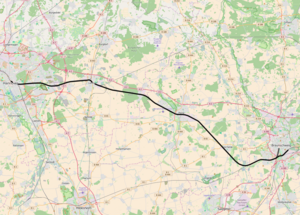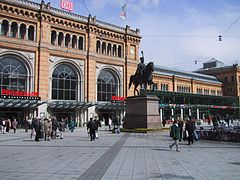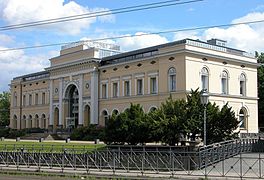Hanover – Braunschweig railway line
| Hanover – Braunschweig | |||||||||||||||||||||||||||||||||||||||||||||||||||||||||||||||||||||||||||||||||||||||||||||||||||||||||||||||||||||||||||||||||||||||||||||||||||||||||||||||||||||||||||||||||||||||||||||||||||||||||||||||||||||||||||||||||||||||||||||||||||||||||
|---|---|---|---|---|---|---|---|---|---|---|---|---|---|---|---|---|---|---|---|---|---|---|---|---|---|---|---|---|---|---|---|---|---|---|---|---|---|---|---|---|---|---|---|---|---|---|---|---|---|---|---|---|---|---|---|---|---|---|---|---|---|---|---|---|---|---|---|---|---|---|---|---|---|---|---|---|---|---|---|---|---|---|---|---|---|---|---|---|---|---|---|---|---|---|---|---|---|---|---|---|---|---|---|---|---|---|---|---|---|---|---|---|---|---|---|---|---|---|---|---|---|---|---|---|---|---|---|---|---|---|---|---|---|---|---|---|---|---|---|---|---|---|---|---|---|---|---|---|---|---|---|---|---|---|---|---|---|---|---|---|---|---|---|---|---|---|---|---|---|---|---|---|---|---|---|---|---|---|---|---|---|---|---|---|---|---|---|---|---|---|---|---|---|---|---|---|---|---|---|---|---|---|---|---|---|---|---|---|---|---|---|---|---|---|---|---|---|---|---|---|---|---|---|---|---|---|---|---|---|---|---|---|---|---|---|---|---|---|---|---|---|---|---|---|---|---|---|---|---|
| Route number (DB) : | 1730 1731 Tiergarten – Misburg, closed 1734 Hanover – Lehrte (S-Bahn) 1910 Groß Gleidingen – Braunschweig (3rd track) |
||||||||||||||||||||||||||||||||||||||||||||||||||||||||||||||||||||||||||||||||||||||||||||||||||||||||||||||||||||||||||||||||||||||||||||||||||||||||||||||||||||||||||||||||||||||||||||||||||||||||||||||||||||||||||||||||||||||||||||||||||||||||
| Course book section (DB) : | 310 Hanover – Lehrte: 360.3, 360.6.7 |
||||||||||||||||||||||||||||||||||||||||||||||||||||||||||||||||||||||||||||||||||||||||||||||||||||||||||||||||||||||||||||||||||||||||||||||||||||||||||||||||||||||||||||||||||||||||||||||||||||||||||||||||||||||||||||||||||||||||||||||||||||||||
| Route length: | 61 km | ||||||||||||||||||||||||||||||||||||||||||||||||||||||||||||||||||||||||||||||||||||||||||||||||||||||||||||||||||||||||||||||||||||||||||||||||||||||||||||||||||||||||||||||||||||||||||||||||||||||||||||||||||||||||||||||||||||||||||||||||||||||||
| Gauge : | 1435 mm ( standard gauge ) | ||||||||||||||||||||||||||||||||||||||||||||||||||||||||||||||||||||||||||||||||||||||||||||||||||||||||||||||||||||||||||||||||||||||||||||||||||||||||||||||||||||||||||||||||||||||||||||||||||||||||||||||||||||||||||||||||||||||||||||||||||||||||
| Route class : | D4 | ||||||||||||||||||||||||||||||||||||||||||||||||||||||||||||||||||||||||||||||||||||||||||||||||||||||||||||||||||||||||||||||||||||||||||||||||||||||||||||||||||||||||||||||||||||||||||||||||||||||||||||||||||||||||||||||||||||||||||||||||||||||||
| Power system : | 15 kV 16.7 Hz ~ | ||||||||||||||||||||||||||||||||||||||||||||||||||||||||||||||||||||||||||||||||||||||||||||||||||||||||||||||||||||||||||||||||||||||||||||||||||||||||||||||||||||||||||||||||||||||||||||||||||||||||||||||||||||||||||||||||||||||||||||||||||||||||
| Top speed: | 140 km / h (Lehrte – Groß Gleidingen) 160 km / h |
||||||||||||||||||||||||||||||||||||||||||||||||||||||||||||||||||||||||||||||||||||||||||||||||||||||||||||||||||||||||||||||||||||||||||||||||||||||||||||||||||||||||||||||||||||||||||||||||||||||||||||||||||||||||||||||||||||||||||||||||||||||||
| Dual track : | continuous | ||||||||||||||||||||||||||||||||||||||||||||||||||||||||||||||||||||||||||||||||||||||||||||||||||||||||||||||||||||||||||||||||||||||||||||||||||||||||||||||||||||||||||||||||||||||||||||||||||||||||||||||||||||||||||||||||||||||||||||||||||||||||
|
|||||||||||||||||||||||||||||||||||||||||||||||||||||||||||||||||||||||||||||||||||||||||||||||||||||||||||||||||||||||||||||||||||||||||||||||||||||||||||||||||||||||||||||||||||||||||||||||||||||||||||||||||||||||||||||||||||||||||||||||||||||||||
The Hanover – Braunschweig railway is a main line opened in Lower Saxony in 1843 and 1844 . It was the first railway line to reach the city of Hanover and the first to be operated by the Hanover State Railway. Today it is one of the most important routes in east-west traffic. The most important stopover is Peine .
course
The route runs flat and straight through the north German lowlands . She leaves Hanover to the east. Originally it led almost straight to Lehrte , but today's connection makes a slight curve over Anderten to the south. In Lehrte it is linked with several other main lines, including the Berlin-Lehrter Bahn , which has been expanded here to become a high-speed line from Hanover to Berlin . From here it turns in a south-easterly direction to Peine. It continues to the south-east and takes on the Hildesheim – Braunschweig railway line , 44 years younger , in Groß Gleidingen , a district of the municipality of Vechelde . Here it changes again in an easterly direction and reaches Braunschweig from the southwest.
history
Hanoverian and Brunswick time
The Duchy of Braunschweig was open to the railroad early on. At the instigation of the then finance minister and head of state bank Philipp August von Amsberg , the section from Braunschweig to Wolfenbüttel of today's Braunschweig – Bad Harzburg railway line was opened as the first state railway in Germany. Both Braunschweig and Prussia put pressure on the Kingdom of Hanover to allow an east-west connection with the new means of transport. However, the then King Ernst August I was still negative. Only when he himself had taken a test drive on the Brunswick route and it proved to be successful did he agree to a train to his capital in 1841. A state treaty was signed with Prussia and Braunschweig, which provided for a connection from Prussian Minden via Hanover to Braunschweig. The skepticism was enough, however, to require the state railroad to build only a small station in Hanover and to set up the operating center and the first branching lines in Lehrte .
Construction began in 1842. The line from Hanover to Lehrte was opened on October 22, 1843, Peine was reached on December 3, and Braunschweig on May 19, 1844. The section east of Peine in Brunswick was also operated by the Hanover State Railroad. As early as July 1843 it was possible to travel from Braunschweig via Wolfenbüttel , Jerxheim and Oschersleben to Magdeburg .
In Braunschweig, only nine years after the first railway in Germany, the first station was replaced by a second , again a terminus, which was to hinder through traffic until 1960.
The network was now developing rapidly. In 1845 the Lehrte – Celle railway was opened , and in 1846 that from Lehrte to Hildesheim. Since they lie across the Braunschweig route, this structure is also known as the " cross track ". 1847 was reached by Celle from Harburg . Months later it was possible to travel from Hanover to Minden and from there to Cologne , which was the first long-distance connection between Berlin and Cologne. Also in 1847, the Wunstorf – Bremen railway line was the second important inflow from the west. In 1853 a branch line was created in Hanover for the first time with the "Hanover Southern Railway" Hanover – Kassel . In 1862 the line between Hanover and Braunschweig was expanded to double tracks.
From 1870
In 1871 the Berlin-Lehrter Bahn was connected to this line, which bypassed the critical Braunschweig node. It now took up the fast traffic to and from Berlin. However, the rapidly growing traffic ensured that the connection via Braunschweig continued to be used intensively.
The current main train station in Hanover was built from 1876 to 1879 because the old one was overloaded.
In the first decade of the 20th century, the railway systems in Hanover were fundamentally redesigned. In 1906, the route in the direction of Braunschweig between the zoo and Lehrte was relocated to the south in order to relieve the Misburg train station. The old route became part of the new freight bypass, which was used from 1909 . Lehrte was expanded considerably. A connecting curve now also allowed journeys from Hanover to Hamburg without changing direction, but only by the freight bypass train. In combination with the connection Abzw. Tiergarten - Misburg until the opening of the "Hasenbahn" Langenhagen-Celle in 1938 and its double-track expansion and electrification in 1965, this was also used by long-distance passenger transport from Hanover to Hamburg, after which only individual long-distance trains from Cologne to Hamburg and regional transport ( Forerunner of today's S6).
1950s to today
The plans to build a through station in Braunschweig were finally implemented. The current Braunschweig main station has been served since October 1st, 1960 . The Hanoverian counterpart was also redesigned in the 1970s when the light rail system that crosses under the main station was built.
The 1973 Federal Transport Infrastructure Plan led the expansion of the Dortmund – Hanover – Braunschweig line as one of eight planned expansion projects in the area of railways. As one of the first measures, the third track was laid between Groß Gleidingen and the Teufelsspring junction to Salzgitter- Beddingen.
Electrical operation began in 1976. Until then, steam locomotives were still frequently used in freight transport, while in Hanover and Braunschweig diesel locomotives of the 216 and 220 series were kept for passenger transport.
In 1990 the Hildesheim route was introduced in Lehrte. A little later, the expansion of the Hanover – Berlin high-speed line began here , with trains running on this route from Hanover to Lehrte.
For the Expo 2000 Hanover received an S-Bahn system . An additional route was laid between Hanover and Lehrte to the north of the previous tracks, single-track from the main train station to shortly before the Karl-Wiechert-Allee stop, from there double-track to just before the Ahlten stop, then single-track again to Lehrte. It was put into operation in 1998. The historic platforms in Hanover-Kleefeld and Anderten-Misburg were demolished, platform edges are only on the S-Bahn tracks (exception: Karl-Wiechert-Allee station in the direction of Hanover). The installation of points in the west of Lehrte made it possible to travel from the long-distance tracks to the connecting curve to Celle. Therefore, the old route between the zoo and Misburg station could be abandoned, the preservation of which would have required the construction of a new canal bridge or extensive relocation.
By summer 2008, the junction in Lehrte was redesigned to give freight trains from the bypass line and from Celle a crossing-free route to Hildesheim and Braunschweig, where the tracks of the high-speed line in the east of the station are passed. The long-distance trains from Wolfsburg and Braunschweig have been able to travel through Lehrte at 120 km / h since then.
planning
The Broitzem station is to be expanded again to accommodate passenger trains. This was agreed on March 28, 2019 between the state of Lower Saxony, RGB and DB.
Peine-Horst accident
On June 16, 2010, at 11.23 p.m., a train accident occurred shortly before a bridge near Peine- Horst. The Regional Express 14019 from Rheine to Braunschweig collided with a freight train of the Mittelweserbahn that had derailed on the opposite track and was traveling with gravel from the Harz to the Emsland. The driver of the Regional Express train was seriously injured, a train attendant and 18 passengers were slightly injured. There was material damage of over five million euros.
The reason for the accident was a loose wheel tire on the tenth wagon of the freight train, which on the one hand was not discovered due to twisting marks that were no longer recognizable, but on the other hand the wagon should not have been placed on a train for that reason. Furthermore, the accident could have been prevented if the driver of the freight train and the dispatchers on the last two route sections traveled through had consistently adhered to the rules.
Current operation
The entire length of the route is served every hour by Intercity trains from Leipzig to Hanover, alternately onward to Oldenburg and Cologne, and by regional express trains Braunschweig – Hanover – Rheine / Bielefeld. The Lehrter Bahn trains come west of Lehrte, including the Intercity Express from Berlin, the S-Bahn line 6 (Celle – Hanover), the S-Bahn line 7 (Celle – Lehrte – Hannover) and the S-Bahn Line 3 (Hildesheim – Lehrte – Hannover) added. Between Groß Gleidingen and Braunschweig there are also trains running on the Hildesheim – Braunschweig line, including the ICE Frankfurt (M) –Berlin.
On the route east of Lehrte there is heavy freight traffic, the ore transports weighing up to 6,000 tonnes Port of Hamburg - Groß Gleidingen - Salzgitter steelworks are the heaviest trains in Germany.
The line is double-tracked and electrified. Between Hanover and Lehrte it runs parallel to the partially double-track S-Bahn line, and between Groß Gleidingen and Braunschweig there is a third track that is mainly used for freight traffic.
Picture gallery
Hanover main station today
The old Braunschweig train station was built for this route.
The main train station in Braunschweig, which has been in service since 1960
literature
- Jürgen Hörstel: Hanover – Berlin. History and construction of a rapid transit system. Transpress-Verlag, Stuttgart 1998, ISBN 3-613-71088-9 (history until 1871, extensions from 1990 in and west of Lehrte).
- Wolfgang Klee: Railway landscape Bremen-Lower Saxony. Motorbuch Verlag, Stuttgart 1992, ISBN 3-613-01445-9 (general outline of Lower Saxony's railway history).
- Alfred Gottwaldt: Hanover and its railways. Alba Buchverlag, Düsseldorf 1992, ISBN 3-87094-345-9 .
Web links
- Route, operating points and permissible speeds on the OpenRailwayMap
Individual evidence
- ↑ OpenRailwayMap , accessed July 8, 2016.
- ↑ DB Netze - Infrastructure Register
- ↑ Railway Atlas Germany . 9th edition. Schweers + Wall, Aachen 2014, ISBN 978-3-89494-145-1 .
- ↑ Hans-Wilhelm Mölbitz: From the old trade routes to today's traffic routes. The development of the traffic routes with regional and national importance east of Burgdorf and Lehrte . Felicitas Hübner Verlag, Lehrte 2016, ISBN 978-3-941911-19-2 , pp. 118 .
- ^ Rüdiger Block: On New Paths. The new lines of the Deutsche Bundesbahn . In: Eisenbahn-Kurier Special: High-speed traffic . No. 21, 1991, excluding ISSN, pp. 30-35.
- ↑ reactivation of stations. Retrieved March 30, 2019 .
- ↑ Investigation report of the Federal Railway Accident Investigation Office: Train derailment in Peine, p. 9. (PDF) In: eisenbahn-unfalluntersprüfung.de. November 4, 2013. Retrieved November 22, 2013 .
- ↑ Investigation report of the Federal Railway Accident Investigation Office: train derailment in Peine, p. 52f. In: eisenbahn-unfalluntersprüfung.de. November 4, 2013. Retrieved November 22, 2013 .
- ↑ The heaviest of the difficult ( memento of August 8, 2014 in the Internet Archive ), on eisenbahnwelt.de, accessed on August 5, 2014






